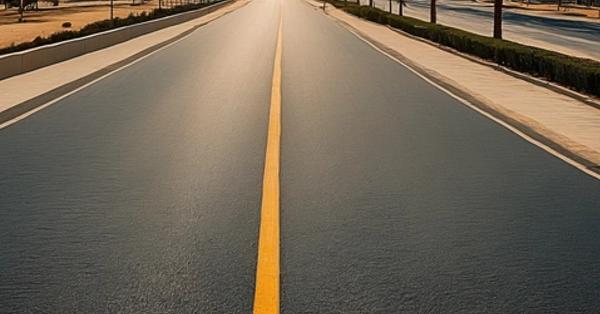As a professional civil engineer with over 25 years of hands-on experience, I find the “cool pavement” initiative undertaken by the Public Works Authority in Qatar (Ashghal) to be an exciting and innovative approach to addressing the challenges of living in a desert environment. Through this pilot project, Ashghal is exploring the use of a cryogenic material that can reduce the temperature of asphalt on roads, thereby contributing to overall temperature reduction in the capital city of Doha.
Conventional Asphalt’s Thermal Impact
Traditionally, conventional asphalt pavements absorb up to 95 percent of sunlight, which can significantly contribute to increased surface temperatures. This heat absorption not only affects the comfort and safety of road users but also has broader implications for energy consumption and environmental impact. In my professional experience, I’ve witnessed firsthand how excessive heat can accelerate pavement deterioration, leading to premature maintenance and rehabilitation requirements.
The “Cool Pavement” Solution
The “cool pavement” material being tested in Doha offers a promising solution to mitigate these thermal issues. By reflecting UV rays and absorbing solar radiation to a lesser extent, this innovative pavement technology can help reduce surface temperatures, thereby creating a more comfortable environment for pedestrians, cyclists, and motorists alike.

Pilot Project Details
Project Location: Doha, Qatar
Pavement Sections:
– 200-meter stretch of road near Souq Waqif (popular tourist destination)
– 200 meters of pedestrian and bicycle paths in front of Katara cultural village
Project Duration: 18 months

The project objective: Test the effectiveness of the “cool pavement” material and measure its potential for wider application across Qatar’s road network.
As a civil engineer, I’m impressed by Ashghal’s proactive approach to exploring cutting-edge solutions to address the unique challenges posed by Qatar’s desert climate. By embracing technological innovation and piloting this “cool pavement” project, they are demonstrating a commitment to sustainability, energy efficiency, and improving the overall quality of life for residents and visitors alike.
Potential Benefits and Impact
The success of this pilot project could have far-reaching implications for Qatar and other desert regions. Hossam Almeer, a data scientist at the Qatar Computing Research Institute (QCRI), aptly highlighted the potential impact, stating: “The degree of cooling could have a real impact on our electricity consumption since air conditioning makes up almost 70% of household electricity usage.“
Reducing the urban heat island effect and mitigating the need for excessive air conditioning can lead to significant energy savings, lower greenhouse gas emissions, and a more sustainable built environment.
My Personal Perspective
As an experienced civil engineer, I have witnessed firsthand the challenges posed by extreme temperature conditions on pavement performance and durability. The “cool pavement” technology being tested in Doha represents a promising solution that could revolutionize the way we design and construct pavements in hot, arid regions.
Through my years of experience, I have learned that innovation and adaptation are key to addressing the evolving demands and environmental challenges faced by the construction industry. Ashghal’s commitment to exploring and implementing cutting-edge technologies like thee “cool pavement” material is commendable and aligns with the industry’s pursuit of sustainable and resilient infrastructure solutions.
In my role, I’m honored to lead the implementation of the innovative “Cool Pavement” project in Doha, Qatar, setting new standards for sustainable urban development.
I eagerly await the outcome of this pilot project and the potential for wider implementation across Qatar’s road network. Such innovative approaches not only benefit the local community but also contribute to the global body of knowledge, paving the way for more efficient and environmentally conscious pavement design and construction practices worldwide.
